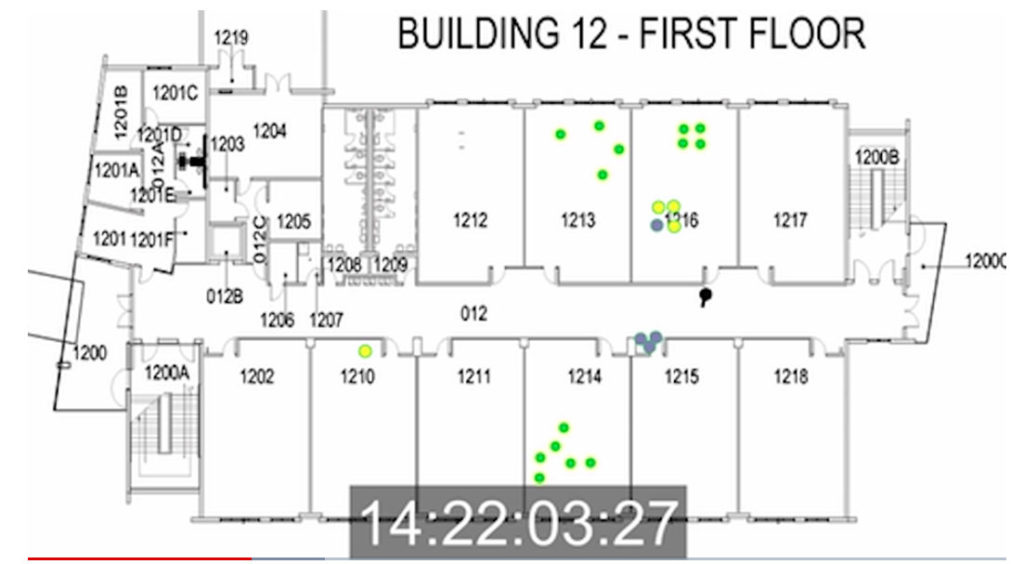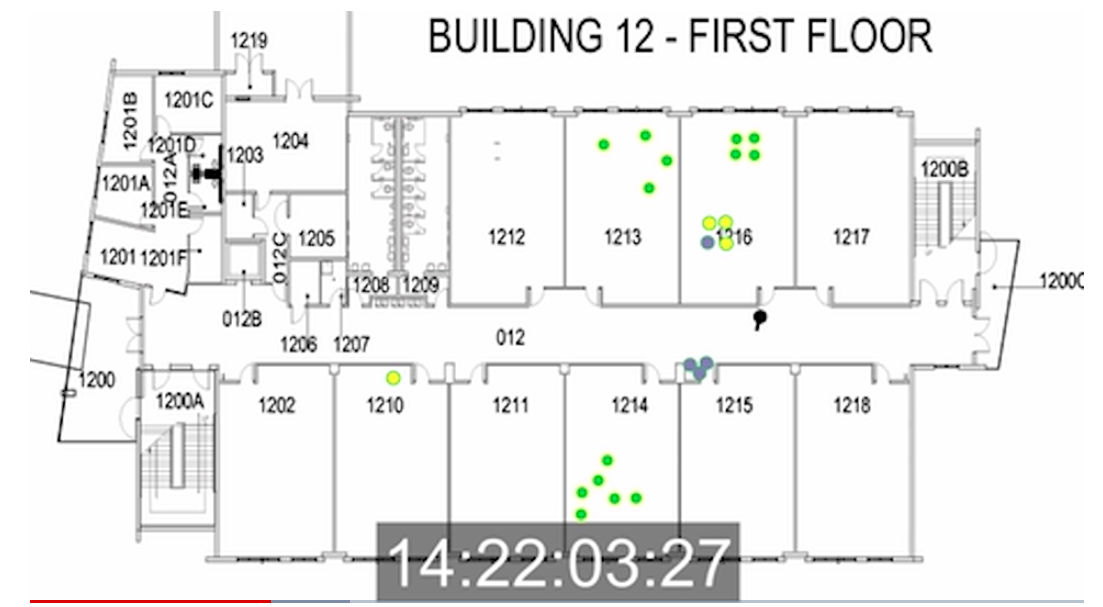 In the 2018 legislative session, the Florida legislature created the Marjory Stoneman Douglas Public Safety Commission – a group tasked with identifying and addressing issues that occurred during the February 14th shooting in Parkland, in order to improve school safety and security. The commission includes representatives from law enforcement, school administrators, mental health counselors, and parents of several victims.
In the 2018 legislative session, the Florida legislature created the Marjory Stoneman Douglas Public Safety Commission – a group tasked with identifying and addressing issues that occurred during the February 14th shooting in Parkland, in order to improve school safety and security. The commission includes representatives from law enforcement, school administrators, mental health counselors, and parents of several victims.
The first meeting of the commission was held this week, and information was shared which will help us to understand the role played by physical security and design features of the building. A video animation was played during the meeting, to illustrate the timeline of events and locations of victims. It is a very difficult video to watch, but provides valuable insight.
News reports state that the design of the school contributed to the loss of life in Building 12 at Marjory Stoneman Douglas High School. There were other factors, certainly, but my area of expertise is codes and physical security, so I will continue to focus on that aspect of school safety. There were several important points illustrated by the MSD video:
- Free Access: Not only was the suspect able to access the school grounds through gates that had been unlocked just prior to dismissal, he was then able to access the building through an unlocked door. Schools that are set up as a campus, with students and staff accessing multiple buildings during the school day, are difficult to secure. The entrance to school grounds becomes even more critical. Doors that are left unlocked to accommodate the flow of occupants throughout the school day, should have electrified hardware to allow immediate lockdown if necessary.
- Lock Function: There are several lock functions commonly used on classroom doors, and there are pros and cons to each (refer to the video on this page). The locks at Marjory Stoneman Douglas were traditional classroom function – locking the door requires the use of a key in the outside lever. If the locks were in the locked position, closing the door secured the classroom. But for locks that were not in the locked position, the teacher had to insert a key in the outside lever to lock the door. It remains to be seen which lock function will be chosen by the district as a replacement – most schools that have experienced past shootings now have classroom security locks, office function locks, or electrified locks – all can be locked from inside the classroom and will still allow free egress. [Note: I have not yet heard of a school where a shooting occurred that has chosen to use classroom barricade devices.]
- Glazing: The classroom doors in Parkland had small vision panels – these are important because they can be used to observe the classroom during normal use. I’m not in favor of removing the ability to see into the classroom in case there might someday be a shooting; these vision panels are often required by state Board of Education standards. Impact-resistant glazing or film can be used to deter access through the glass to operate the hardware from the inside, but ballistic-rated glazing would be extremely costly. Covering the glass during a shooting and moving students to an area of the classroom that is out of the line of sight would be much more feasible. In the video, the suspect accessed the teachers’ lounge by breaking the glass and reaching through, but he did not access the classrooms this way (why?).
- Restrooms: In the animation, several victims moved toward the restrooms and then left. This makes me wonder whether restroom doors were locked, or whether victims didn’t feel that they would be safe in non-lockable restrooms. A deadbolt function that can be locked from the inside with a key but allows egress with a thumbturn could allow building occupants to shelter in the restroom, but only if a teacher with a key was inside of the restroom to lock the door.
- Fire Alarm: There are conflicting reports on whether the suspect activated the fire alarm manually, or whether the shooting caused the fire alarm to activate. The video indicates the latter. Schools need to implement procedures for what to do if a fire alarm and an active-shooter incident happen simultaneously.
- Stair Doors: As I wrote in my article earlier this week, compartmentalizing a building can help to limit the movement of assailants from one area of the building to another. One important clarification is that when electrified hardware is used to limit access, most types of electrified hardware are not required to unlock upon fire alarm. The exception would be electromagnetic locks released by a sensor, which I would not recommend for schools. If the stair doors in Building 12 had been locked on the stair side to limit movement between floors, the International Building Code (IBC) requires those doors to be able to be unlocked by a signal from the fire command center or other location. Typically this switch is activated by firefighters; the IBC does not require stair doors to automatically unlock upon fire alarm.
- Notification/Training/Drills: In order to respond properly, it’s critical for schools to have a way of immediately alerting students and teachers to a security breach, as well as alerting emergency personnel. In the video, the occupants of the second floor responded differently from the occupants of the first and third floors – perhaps because the second-floor occupants heard gunfire. Training and drills are also critical components of a school’s security and safety plan. In one news report, a teacher whose classroom was on the second floor indicated that she heard shots, locked the door, covered the vision light with paper, turned off the lights, and told the students to hide out of sight of the doorway – silently. She did all the right things, but the article states, “She said it was purely ‘presence of mind’ because she had never been trained for a scenario such as this.”
.
If you have questions about school security and safety, please leave them in the reply box or send me an email.
Image: Sun-Sentinel
You need to login or register to bookmark/favorite this content.






Lori,
I’d like to address your question. “In the video, the suspect accessed the teachers’ lounge by breaking the glass and reaching through, but he did not access the classrooms this way (why?).”
There were at least two possible reasons why. Entering the classrooms represented an unnecessary risk to his success and he probably understood the speed of his surprise assault improved his chances of success.
Risk – If these students (which he was at some point) were exposed to active shooter training then he knew there was a possibility a group of students and their teacher might attempt to overcome him as he entered the room. Therefore;
Speed – As indicated in this and other video taken by the students themselves, those on the first floor didn’t have time turn out classroom lights, blind the side lights of even take positions in safer portions of their rooms. He COULD SEE that he didn’t have to enter the rooms. Those on the 3rd floor in room 1255 were able to at least take better positions and is quite likely why they were spared injury. Depending on how much research this person did he may have understood staying in the hallway also provided him with a kill zone should anyone attempt to escape their room.
I think you are spot on concerning the need for a really good alert system and training.
The sad reality is it takes time for people to realize what is happening. Many people don’t know what gunshots inside a building sound like. ROTC students across the campus reportedly recognized the sound of gunfire and responded accordingly while others as evidenced in this video walked right into the shooter.
This latest incident represents another escalation in the active shooter arms race. Sadly this shooter showed those that will follow him how to overcome door locks, active shooter training and barricades.
Thanks Jon! I appreciate your insight!
– Lori